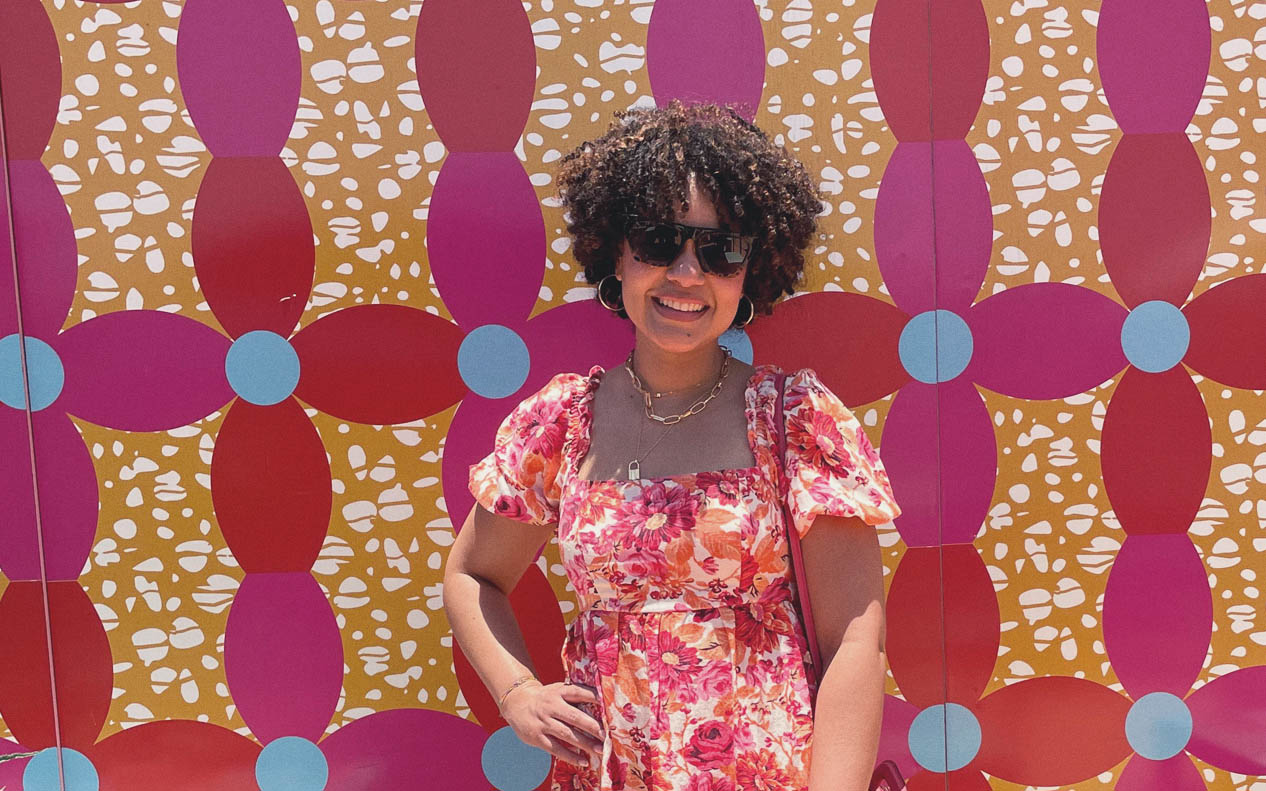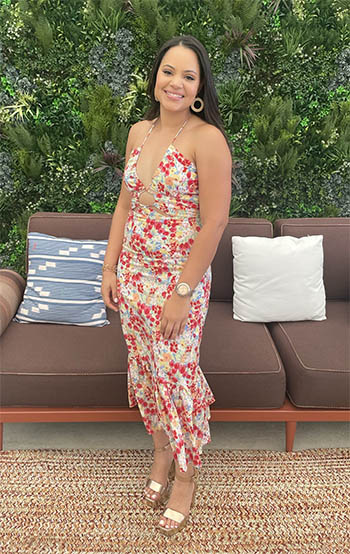My name is Mayelin, and I have bad hair. Pelo malo. Or at least, that’s what I believed for nearly thirty years of my life.
Where I’m from—the shared Caribbean island of Hispaniola—there’s such a thing as “good hair” and “bad hair.”
But what is bad hair? I’m glad you asked. It’s simply naturally curly or coily hair. And why is that bad? It’s not. Or rather—it shouldn’t be.
In the Dominican Republic, wearing your natural hair was not widely accepted. As a result, I spent two-thirds of my life trying to change my hair texture. And I tried—oh, I tried.
No need to call Child Protective Services, but I got my first hair-relaxing treatment around age seven. And let me tell you—I felt so pretty. My hair was finally soft, silky, tamed—like some of my classmates’. Before that, it was “unmanageable,” demanding rough handling just to look somewhat “decent.” Dominicans call it pajón—messy hair. There was no such thing as styling your curls. The products, tools, knowledge—and most of all, the social acceptance—simply weren’t there.
There’s a reason Dominican blowouts are famous. Somewhere along the way, we made it our mission to hide our African features by mastering techniques to straighten hair. A whole salon culture was born. I don’t know when or how, but going to the hair salon once or twice a week—every week, all year—became a cultural norm. No one questioned it. Why would they?
So I grew up in this world, where weekly salon visits were sacred. I never stopped to wonder why I had to hide that part of myself to fit in. It was just the way things were. Straight hair was formal, pretty, and appropriate. Before school started, for presentations, holidays, weddings, birthdays—any event, really—you got your hair done. If you went to the beach for the weekend, you were in the salon chair at six or seven a.m. Monday morning before work. The message was clear: whatever you do, tame that hair.
For some of us, blowouts weren’t enough. We needed relaxers—chemical treatments every four to six months to beat back the coils. For decades, I fought a losing battle with my roots. Straighten, grow, repeat. It was a cycle—expensive, time-consuming, and terrible for my health.
These beauty standards weren’t just about hair—they were tied up in racial bias, too. I heard things like, “You should marry to better the race”—meaning, marry someone with straighter hair so your kids would have more “manageable” textures.
Now, I won’t pretend straight hair isn’t easier to handle—it often is. But assigning moral value to hair texture? That’s not just silly—it’s wrong. Still, I grew up feeling like my “bad hair” made me less than. Why wasn’t I blessed with soft, silky, “good” hair? For a time, I truly wished I could change my hair permanently.
And so I lived that way—until I turned thirty-one.
It was a hot day in South Florida, where I’d been living for nearly a decade. Nothing extraordinary about it, except something shifted in me. I, Mayelin Teresa Rodríguez Pérez, decided I’d had enough. No more blow-drying. No more relaxing. I was ready to meet my natural curls—truly—for the first time.
I told myself it was just an experiment. If I gave up, that would be okay. No pressure. That little out was really fear of failure—but it helped me begin.
And so my journey started.
How it went, though? That’s a story for another day.

 Born and raised in the Dominican Republic, Mayelin moved to South Florida in 2014. She's an attorney by day (and some evenings, too), and in her free time, enjoys trying new restaurants, learning about makeup/skincare, and finding fun and new things to do in South Florida.
Born and raised in the Dominican Republic, Mayelin moved to South Florida in 2014. She's an attorney by day (and some evenings, too), and in her free time, enjoys trying new restaurants, learning about makeup/skincare, and finding fun and new things to do in South Florida.